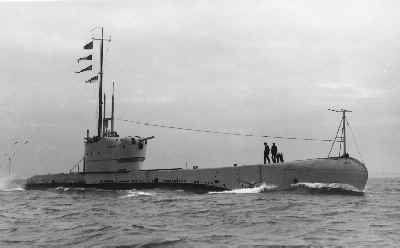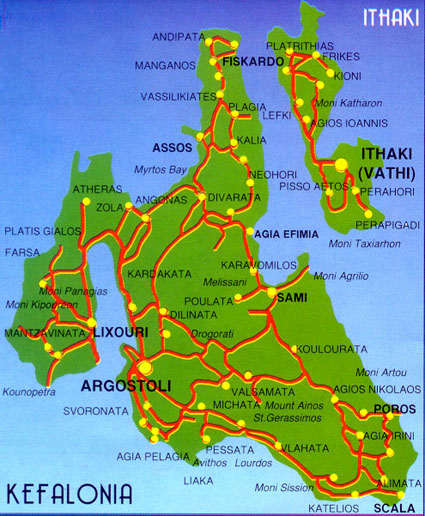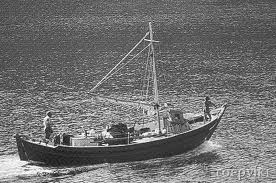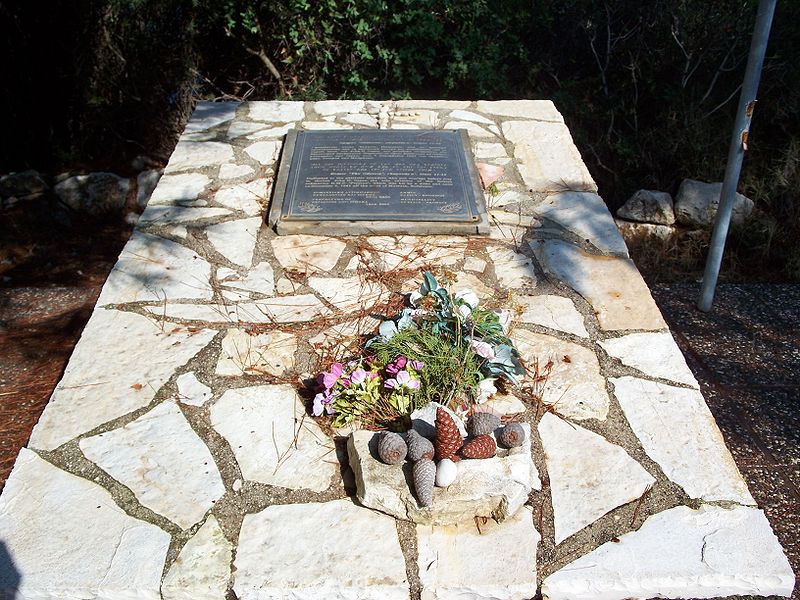|
"Of
all the branches of men in the Forces, there is none which shows more devotion
and faces grimmer perils than the submariner. "Only in attack does a submarine reveal herself, before creeping away to the concealment of the deep"
HMS Perseus
(From an article on BBC Radio 4 linked below &
reprinted with permission)
 Seventy years ago, off the Greek island of Kefalonia, the British submarine HMS Perseus hit an Italian mine, sparking one of the greatest and most controversial survival stories of World War II. The clear waters of the Mediterranean were a death trap for British submarines in World War II. Some were bombed from the air, others hunted with sonar and depth charges, and many, perhaps most, collided with mines. Two fifths of the subs that ventured into the Mediterranean were sunk and when a submarine sank it became a communal coffin - everyone on board died. That was the rule. In fact, during the whole of the war there were only four escapes from stricken British submarines. And the most remarkable of these took place on 6 December 1941, when HMS Perseus plummeted to the seabed.
The submarine sailed from Malta for Alexandria on 26 November 1941 with instructions to patrol waters to the east of Greece during her passage. HMS Perseus had on board her 59 crew and two passengers, one of whom was John Capes, a 31-year-old Navy stoker en route to Alexandria. Tall, dark, handsome and a bit of an enigma, Capes had been educated at Dulwich College, and as the son of a diplomat he would naturally have been officer class rather than one of the lowliest of the mechanics who looked after the engines. On the rough winter night of 6 December, Perseus was on the surface of the sea 3km (two miles) off the coast of Kefalonia, recharging her batteries under cover of darkness in preparation for another day underwater.
According to newspaper articles Capes later wrote or contributed to, he was relaxing in a makeshift bunk converted from a spare torpedo tube when, with no warning, there was a devastating explosion. The boat twisted, plunged, and hit the bottom with what Capes described as a "nerve-shattering jolt". His bunk reared up and threw him across the compartment. The lights went out. Capes guessed they had hit a mine. Finding that he could stand, he groped for a torch. In the increasingly foul air and rising water of the engine room he found "the mangled bodies of a dozen dead". But that was as far as he could get. The engine room door was forced shut by the pressure of water on the other side. "It was creaking under the great pressure. Jets and trickles from the rubber joint were seeping through," said Capes. He dragged any stokers who showed signs of life towards the escape hatch and fitted them and himself with Davis Submarine Escape Apparatus, a rubber lung with an oxygen bottle, mouthpiece and goggles. This equipment had only been tested to a depth of 100ft (30m). The depth gauge showed just over 270ft, and as far as Capes knew, no-one had ever made an escape from such a depth. In fact the gauge was broken, over-estimating the depth by 100ft, but time was running out. It was difficult to breathe now. He flooded the compartment, lowered the canvas trunk beneath the escape hatch and with great difficulty released the damaged bolts on the hatch. He pushed his injured companions into the trunk, up through the hatch and away into the cold sea above. Then he took a last swig of rum from his blitz bottle, ducked under and passed through the hatch himself. "I let go, and the buoyant oxygen lifted me quickly upward. Suddenly I was alone in the middle of the great ocean. "The pain became frantic, my lungs and whole body as fit to burst apart. Agony made me dizzy. How long can I last? "Then, with the suddenness of certainty, I burst to the surface and wallowed in a slight swell with whitecaps here and there." But having made the deepest escape yet recorded, his ordeal was not over. His fellow injured stokers had not made it to the surface with him so he found himself alone in the middle of a cold December sea. In the darkness he spotted a band of white cliffs and realised he had no choice but to strike out for those. The next morning, Capes was found unconscious by two fishermen on the shore of Kefalonia. For the following 18 months he was passed from house to house, to evade the Italian occupiers. He lost 70lb (32kg) in weight and dyed his hair black in an effort to blend in. He recalled later: "Always, at the moment of despair, some utterly poor but friendly and patriotic islander would risk the lives of all his family for my sake. "They even gave me one of their prize possessions, a donkey called Mareeka. There was one condition attached to her - I had to take a solemn vow not to eat her." The sub was found at 32 metres depth.
He was finally taken off the island on a caique in May 1943, in a clandestine operation organised by the Royal Navy. A dangerous, roundabout journey of 640km took him to Smyma in Turkey and from there back to the submarine service in Alexandria. Despite being awarded a medal for his escape, Capes's story was so extraordinary that many people, both within and outside the Navy, doubted it. Was he really on the boat at all? After all, he was not on the crew list. And submarine commanders had been ordered to bolt escape hatches shut from the outside to prevent them lifting during depth charge attacks. There were no witnesses, he had a reputation as a great storyteller, and his own written accounts after the war varied in their details. And the depth gauge reading 270ft made his story all the harder to believe. John Capes died in 1985 but it was not until 1997 that his story was finally verified. In a series of dives to the wreck of Perseus, Kostas Thoctarides discovered Capes's empty torpedo tube bunk, the hatch and compartment exactly as he had described it, and finally, his blitz bottle from which he had taken that last fortifying swig of rum. BBC Radio 4's Escape from the Deep was broadcast on Friday 2 December 2011 at 1100 GMT. http://www.bbc.co.uk/news/magazine-15959067 The BBC Article on Perseus Pennant N 36 Built by Vickers Armstrong (Barrow-in-Furness, U.K.) Ordered 7 Feb 1928 Laid down 2 Jul 1928 Launched 22 May 1929 Commissioned 15 Apr 1930 Lost 6 Dec 1941 Loss position37.54N, 20.54E War Record 26 Aug 1940 5 Sep 1941 2 Oct 1941 4 Dec 1941 Perseus was the 5th of 6 Royal Naval vessels to share that name
Perseus Memorial near Poros Kefalonia
the following article is written by Rena Giatropoulou and appeared in the Aug 1998 magazine Diver On the night of 6 December, 1941, the British submarine HMS Perseus was patrolling the surface of the Ionian Sea between the Greek islands of Cephalonia and Zante. It was her last patrol before she was due to return to base in Alexandria. On board, in addition to the standard crew, was 31-year-old John Capes, a Navy stoker hitching a ride to Alexandria to rejoin his ship. John Capes It was a dark and windy night. John Capes was resting in an empty torpedo rack at the aft end of Perseus. Above him there was a round escape hatch. He was going through some letters, drinking rum from a bottle that later proved to be a lifesaver. Suddenly a tremendous explosion shattered the submarine from stem to stern. The lights went out, and cries of panic and despair came from every quarter as tons of water surged into the vessel. The submarine had hit something, probably a mine, and was going down in a nosedive. Her prow hit the bottom with a tremendous impact and then her stern settled heavily on the seabed. Within seconds HMS Persus had become an underwater grave for most of her crew. Strangely, the aft compartments did not start to flood until Perseus touched the bottom, and Capes, although injured, was still alive. He started to grope around until he found the torch that was always placed near the escape hatch. Luckily it was still working. Its rays pierced the damp and foggy atmosphere, smelling of paint from an upturned pot. Capes started to search for his shipmates. He went into the engine room and saw a dreadful scene: the electricians were dead, probably after falling on live switches. However, among the scattered bodies and wreckage he managed to find three other badly injured stokers. Not far away was the bulkhead door, held shut by the pressure of water on the other side. It creaked ominously, while jets and trickles of water seeped through its rubber seal. "That door," wrote Capes years later, "saved me and the three injured men I found alive in the debris. Our plight was one of horror. The water was rising in the engine room bilges and we were surrounded by the mangled bodies of a dozen dead. Perseus had become a cold steel tomb surrounded by the relentless sea." At that moment Capes remembered his bottle of rum. Cold had already started to penetrate the survivors, and he thought the alcohol would warm everyone up. All four of them had a few rev-iving sips. Then Capes carried the wounded men to the stern compartment, where there was an escape hatch: their only chance for escape, if it hadn't jammed in the sinking. In order to open the escape hatch, Capes had to balance the pressure in the compartment with that in the sea. His reactions were immediate: "I shut the aft watertight door, isolating us in the stern compartment," he recalled later. "I opened four lockers and strapped rubber escape sets (Davis submerged escape apparatus) on my companions". Then Capes lowered the collapsible canvas escape sleeve (or trunk) and secured it by lashings to the deck. At the top of the sleeve was the escape hatch, with four nuts holding it in place. Next he had to find a way to flood the compartment from the sea, so that the water would rise around the escape trunk, leaving a small pocket of compressed air to stop the water rising further. The next step for the four seamen would be to insert their mouthpieces, duck down under the water, and come up inside the trunk before getting out into the open sea through the escape hatch. But when Capes found the valve in the starboard bilge he was unpleasantly surprised. Its spindle was bent and immovable. They were trapped. Time was passing and Capes had to find an alternative way to flood the compartment before they were all frozen to death. It was then that he remembered the underwater gun, normally used for sending smoke signals to the surface for instruction purposes. "I splashed down to the gun and op-ened its breech," Capes continued. "I tried the sluice valve gently and could feel the thrust of water entering. It increased to a steady whirl as the sea gushed in and then steadied. The air space round the hatch diminished rapidly. Here it came - the sea that would save us, drown us or freeze us to death. "The atmosphere in the small space was becoming foul. As the water swirled around us almost chest high, a thick oily scum of paint spread across the dark swell in the confined space. We breathed this putrid air, slightly warm from its compression." Capes turned on his Davis apparatus and, breathing painfully, ducked down through the paint scum, groped for the bottom rim of the escape trunk and dragged himself into it. Soon he had his head above water in the tiny pocket of air below the escape hatch. He stretched out his hand and unscrewed the small vent cock in the middle of its steel lid. These were critical moments. "The air whistled out to the sea above and the slimy water rose above my face. My teeth were chattering. I realised the oxygen would not give me long. I had much to do still. Using all my weight, I put my remaining strength on the tommy bar in the tube spanner to undo the dog nuts. Fortunately, they were not corroded, and came away without difficulty. The vital moment came as the last nut dropped below me and the hatch flew wide open while a giant bubble of air escaped." The way to the surface - deadly hazardous though it was - was now open. A battle was won, but the war was not over. Capes now had to go back through the escape trunk and into the foul air still trapped in the roof of the compartment where the injured crewmen waited. He was relieved to find them still breathing, but time was running out, and he had to act quickly. They were all wearing Davis apparatus, ready to leave the submarine. But how deep were they? The depth gauge was showing a little over 270ft (82m). But was it still working? And if so, what chance did they have to surface from that depth? The fact that the Davis apparatus contained pure oxygen and not air made the situation even more hazardous. But the desperate seamen didn't have a choice. They had to get out of the sunken submarine and attempt an ascent, no matter how dangerous that might be. It was the only way to escape the death they would inevitably suffer unless they abandoned the sub. Without wasting another moment, John helped his shipmates into the escape trunk, through the hatch and out to the sea. Then he followed. Visibility in the cold, dark water of the Ionian Sea was very limited. "I flashed my torch around," Capes recollected, "but was unable to see further than a few feet of rear casing steel deck. This was my last glimpse of the valiant Perseus." The ascent to the distant surface had to be taken slowly if the escaping men hoped to avoid dramatic consequences. John Capes went through agonising moments trying to slow down his ascent. He was dizzy and felt as if his lungs were going to burst. Unless he did something fast he wouldn't make it to the surface alive. He unrolled a small apron he had on his apparatus, designed to act like a parachute in reverse, and held it out in front of him. Theoretically, it was supposed to trap the water and slow his ascent, but it unbalanced him and turned him upside down. So he had to let go to become upright again. His breathing was getting more painful, and things were not about to get any easier. "I still had my torch, which suddenly illuminated wires hanging from a large cylindrical object," Capes went on. "It was an acoustic mine. Dear God! Any sound was supposed to set it off. God only knows why it didn't go off. Perhaps I was destined to live. The pain was constantly increasing, and just when I thought I couldn't take it any more, I realised that I had burst to the surface! "The sea was rough. I looked around but there wasn't any sign of my companions. I didn't want to believe that I was the only survivor of the 60 crew members of Perseus, a British submarine whose tragic fate was now indicated only by the air bubbles that were still coming up from the wreck to the surface. My eyes searched the wave tops in despair. "Then, at some distance, I saw a ribbon of white, bobbing about on the wave crests. It appeared to be a broken line of cliffs, probably a beach on the Greek island of Cephalonia. "Despite the intense pains in my lungs, I started to swim towards the shore, hoping that my shipmates had already struck out in that direction." Capes, resourceful as he was, made the oxygen bag of the Davis apparatus into a kind of lifebelt in order to get through the strenuous ordeal of swimming in the cold sea. Although he was feeling the consequences of his fast ascent, and despite being injured, the thought of giving up his fight to live never crossed his mind. Hour after hour he kept going, sometimes on his back, then swimming breaststroke, resting frequently. Eventually, he realised that land was close by. With renewed effort he gathered his strength for a final push to the shore. He could now see cliff formations clearly. Suddenly his foot struck something hard. He had reached rocks fringing the shore. Gasping in dry air, he dragged himself on, and eventually crawled over the rocks onto a sandy beach. He hauled himself a little further, and then with his face down, head on hands, he lapsed into unconsciousness. The residents of the nearest Cephalonian village found him there the next day. For the next 18 months they sheltered him, moving him from house to house to avoid the occupying forces of Italians and Germans, before smuggling him by boat to safety in Turkey. The wreck that stood up the stoker's story A Greek diving team's discovery of the Perseus wreck (reported in Diver Magazine in April) supports the lone survivor's account of his escape. When Greek diver Kostas Thoctarides read the story of HMS Perseus he wondered what had become of the British submarine. Where exactly had it sunk? And had it been mined, or torpedoed, as some people said? He mounted an expedition to look for some answers. In unfavourable weather conditions last December, his attempts to search the seabed for the Perseus failed initially to produce results. Then a local fisherman remembered that his nets had occasionally become caught on something heavy and immovable in the area where the Persus was thought to lie. The diving team searched there, and eventually the silhouette of a wreck showed on their sonar at 52m. Its shape and size matched the characteristics of the British submarine. The next morning Thoctarides dived to the wreck and confirmed that it was the lost sub. Three more dives followed. Pictures showed that Perseus lies on the seabed with a starboard list. On her port side, near the bow, there is a crack caused by her collision with a mine. That is the only significant damage to the vessel. The rest of her hull is in good condition. Her gun, her steering wheel, and everything else is in place. Her compasses, which are still working, show her last course. The escape hatch of the stern compartment is open, just as Capes left it, and everything in the compartment fits the scene as he described it. There is a bottle, a Davis apparatus, a boiler suit and three army boots. Sea creatures have settled into the hull of the submarine: two morays, which seem to live on the wreck, are very protective of their nest, while fish squads patrol around it. Close to Perseus divers found the anchor of an Italian mine: a discovery that seems to confirm that an exploding mine was the cause of her sinking. British authorities had assumed that this was the case, but it had never been confirmed. The divers did not enter the wreck, which is, of course, a war grave. Nothing was removed: the only things taken were photos and video. But the divers did bring back something substantial: verification that John Capes had indeed made a superhuman ascent from what could have been his tomb on the seabed. Unfortunately, he is no longer here to share in the rediscovery of the Perseus. He died in 1985 at the age of 75. The above account and verification is taken from the site linked below and from the August 1998 edition of Diver http://www.divernetxtra.com/wrecks/perse898.htm References http://memorials.emerys.co.uk/perseus.html http://www.cyber-heritage.co.uk/thetis/sub.htm
|





